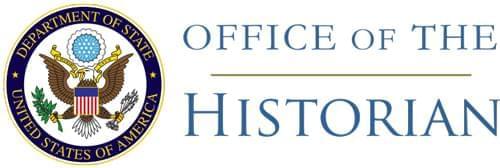760.00/3–2752
No. 66
Memorandum by the Deputy Chief of the
Joint Subsidiary Plans Division, Joint Chiefs of Staff
(Hopkins), to the Psychological Strategy Board1
SPDM–93–52
Program for Exploitation and Utilization of Escapees
- 1.
- The preliminary plan provides for the formation of military elements in implementation of the so-called “Kersten Amendment”.2 The plan is concerned with the formation of selected persons from Soviet Bloc countries and regions into military elements in support of U.S. military forces which are affiliated with the North Atlantic Treaty Organization. It sets forth a phased program to recruit, organize, train and utilize escapees, and establishes basic guidance for these activities over the first three years of a program, beginning 1 July 1952. Certain preliminary activities required for its detailed implementation are reflected by the plan.
- 2.
a. Initial reception, subsequent care and ultimate provision for refugees in Europe are activities of private organizations operating under the aegis of the State Department, and this is established as a pattern of U.S. activity by PSB D–18/a.3 The preliminary plan envisages a military program, in cooperation with the basic effort undertaken by such private organizations, whereby military recruitment may be publicized, volunteers removed, and, as required, returned to those organizations when not selected for service in the military program.
b. All volunteers selected for military service, except for those individuals who are otherwise suitably qualified, will complete six months’ basic training. For this purpose, volunteers will be organized in light infantry regiments. Such units will be formed as phased personnel increments. Under the program, one new regiment is envisaged to begin basic training each month during the first six months of activity, starting 1 July 1952. Beginning 1 January 1953, it is envisaged one new training regiment will be activated each three weeks through the duration of the program, so that [Page 172] the final regiment will begin training on 30 June 1955. At that time the plan envisages that approximately 60,000 escapee-volunteers will have been entered in the program.
c. Upon completion of basic training, volunteers will be assigned to the commands in Europe under the Joint Chiefs of Staff and other U.S. agencies in Europe, either for further training and organization or for immediate employment. As a result of basic training it is considered that such units will have a capability as labor or service units, with only limited capability as combat forces. It is envisaged that military units to be formed and organized after basic individual training is completed possibly may be developed into diverse, combat worthy elements. Thus, being considered are:
- (1)
- Air Force—National squadrons and wings
- (2)
- Navy—Minesweeper or other small craft units
- (3)
- Army—Regimental combat teams and combat and service support units, including engineer and signal units
. . . . . . .
d. Type of organization and scope of extended training subsequent to completion of basic training will be conditioned by the nature of employment for which the units are destined, and this in turn will be determined by the objectives to be attained by the program. Employment of the military elements to be formed either as combat or combat support type units will require advanced training. Similarly, specialized training will be required to permit utilization of such personnel for other distinctive roles and missions. It is estimated that six months of such training will produce qualified individuals and units for many important and useful tasks. It is considered that specific needs and objectives of the military Services will determine the training, organization and employment of the basically-trained personnel allocated to them. Regardless of the nature of the organization it appears that the troop ceilings of commands in Europe under the Joint Chiefs of Staff would have to be increased. If the activities envisaged by the plan are undertaken without appropriate increase in troop ceilings, there will be established requirements which can be met only at the expense of existing programs and commitments. Accordingly, appropriate increases in the ceilings of the military services may have to be authorized.
e. Build-up of commands in Europe under the Joint Chiefs of Staff with appropriate U.S. elements is proposed, as may be required to enable employment of escapee-volunteer units. Such augmentation will be conditioned by requirements for support of the military elements to be formed and in consideration of current U.S. capabilities for such support.
- 3.
- a. Estimated direct costs of the program proposed by the plan
include:
FY 1952 FY 1953 Total $6,431,020 $41,951,420 - 4.
- It is important to note that none of the matériel requirements reflected by this plan have been programmed and that no funds have been reported or allocated in this matter. It is considered likely that, if approved, implementation of the plan would require supplemental funds during FY 1953. This consideration is dictated by a possible measure of success of the program, entailing an acceleration of U.S. efforts in its development and exploitation.
- Attached to a memorandum from Hopkins to Godel (PSB) which noted that the paper had not been coordinated with Hopkins’ military colleagues due to the urgency of its consideration by the PSB Panel.↩
- Reference is to Section 101(a)(1) of the Mutual Security Act of 1951, P.L. 82–165 (65 Stat. 373), Oct. 10, 1951.↩
- Document 63.↩
